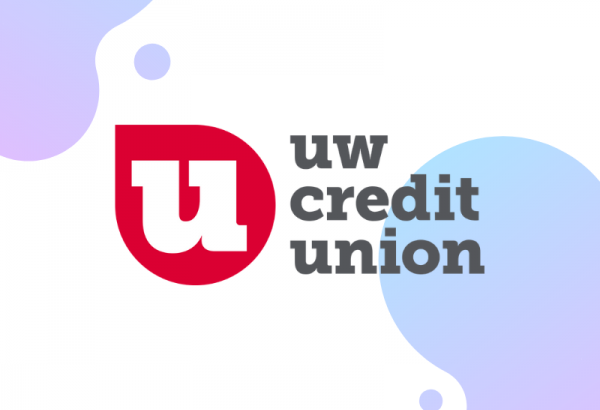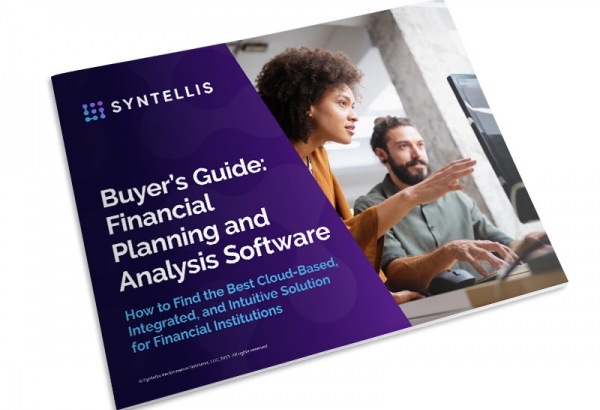Joyce Etheridge, Fiserv
2020 may be over, but it’s still driving decision making. The pandemic highlighted areas where financial institutions can improve. As we move forward, organizations continue to uncover ways to build resiliency, efficiency, and profitability, not just for a new normal, but also for whatever comes next.
American Banker recently hosted a roundtable discussion to help leaders plot a steady path through that uncertainty. The panel included Danny Baker, Vice President, Market Strategy for Financial & Risk Management Solutions at Fiserv, and John Kim, Senior Director of Product Management for Financial Institutions at Syntellis Performance Solutions.
They discussed the changes 2020 brought as well as how financial institutions can prepare for what’s next.
How did COVID-19 affect trends in the banking industry?
Baker: There are a lot of reports about COVID-19’s severe effects on the banking industry, but I think there’s an important distinction to cover first: The pandemic alone didn’t cause the trends. We saw those coming, but the pandemic accelerated them.
Some of those trends include globalization, changes to the way we work, more competition from tech players, changing customer needs and expectations, and a greater focus on social causes and sustainability. All were in play a year ago or more, certainly before the pandemic. Now, they’re coming faster, and we can’t ignore what’s on our doorstep.
Financial institutions want to address prolonged low interest rates, cyber-risks and compliance. Those efforts might now be focused on COVID-19 recovery or recently on Paycheck Protection Program (PPP) lending, but the core issues of profitability and compliance aren’t new and won’t disappear after the pandemic.
It’s the same with customer expectations. Financial institutions want to know their customers more intimately — well enough to predict what they need before they ask — and then deliver a seamless experience. That expectation was growing before the pandemic.
Those trends now have greater urgency and will play a big role in building organizations’ resilience and revenue recovery.
Kim: In January, Syntellis released the findings of a market survey in which two-thirds of bankers said they didn’t expect the economy to bounce back until 2022 or later. More than half of the finance executives we surveyed said they expect profitability to decline or remain flat in 2021.
How can financial institutions maintain earnings when margins are squeezed so tightly? What if the low-rate environment lasts until 2023? How will changes in the workplace affect commercial real estate and trickle down into financial portfolios?
Financial institutions have a lot to consider, including the types of products they offer and to whom, how those products are delivered and associated risks. Those questions have greater importance because of the pandemic.
How can financial institutions respond to changing market conditions?
Baker: We know financial institutions are looking for new ways to drive growth and profitability, and some will include potential risk. So, what they can consider — and what field regulators will be looking for — is testing and measuring strategies before taking action. Financial institution leaders want structured ways to test strategies and to understand the risk-reward trade-offs early in the process.
That takes systems, processes, and tools. Data and analytics are integral in drawing connections between what’s happening in the market and how to respond. The ability to respond must be much more agile for that next normal.
From a technology perspective, what should financial institutions consider as they move forward?
Kim: Operating from a single version of the truth is crucial. It’s a single source of quality data that’s accessible, even in virtual or mobile work environments.
From a technology perspective, financial institutions want more future-focused capabilities. They want to incorporate more scenario planning and analysis into decision making. And they want ways to visualize performance and profitability and to see how parts of the business react to internal and external change.
Financial organizations need to understand all their costs and cost allocations to analyze profitability. They want to understand profitability in terms of relationships, customers, products, and so forth. With that kind of insight into performance, they can measure and assess profitability, as well as risk, more accurately.
But it’s not just a technology issue. People and processes must adapt to support the technology. Staffing and skill sets need to change to support a more data-driven approach.
How can financial institutions overcome weaknesses to build long-term agility and resilience?
Baker: There are two strengths financial institutions can develop that ultimately build responsiveness: efficiency and effectiveness.
Efficiency is often associated with automation, artificial intelligence, and the cloud. Those are all critical to gaining efficiency, especially if we mean “doing work faster.” But those tools also drive fulfillment. They’re a means to a greater end. Efficiencies tighten up the back office so financial institutions can bring consumer promises to life.
With greater efficiency, financial institutions have greater capacity. That means you can quit spending 80% of your time creating and preparing data and more time analyzing it. Efficiency gives you more time for more important things.
Effectiveness is how we protect the organization in a low-growth environment. Risk assessments and performance management systems — all our effectiveness tools — ensure we’re doing the right things, making the right decisions, pursuing the right investments.
Effectiveness closes the gap between strategy and execution so financial leaders can enhance performance. It means frontline workers and devices are in sync, capital projects are managed more closely from start to finish, and leaders can tweak pricing or targeting to achieve profitability.
Digital transformation plays a part in achieving effectiveness. But it’s not just about outward-facing tools or how the organization presents itself digitally to customers and members. It’s not an app. Transformative digital capabilities enable fast and smooth behind-the-scenes delivery and fulfillment. It’s about having the right processes, the right people, and the right technology.
Financial institutions will be stronger, more efficient, and more effective when they close gaps between the front and back offices and between strategy and execution.
What are some real-life examples of how profitability analysis, scenario planning, and forecasting improve performance?
Kim: During 2020, we saw several examples of financial institutions using data to spot trends and develop appropriate responses.
First, rather than looking at quarterly or monthly reports, financial institutions with good access to quality data started looking at performance every morning. The pandemic environment was changing quickly, and some finance teams saw those changes within the data and identified needs and trends. They could see how many debit card swipes were done every day, how branch transactions occurred and how many customers used digital services. They planned their strategies accordingly.
Some organizations replaced annual and quarterly forecasts with monthly projections. They created scenarios down to the instrument level and saw how their assumptions affected the organization. One bank ran nine COVID-related scenarios in just two days. It was able to plan in a nimble fashion and adapt to changes in the economic environment.
Using profitability tools, financial institutions saw how individual clients and relationships contributed to profitability. With that information, they created incentive plans to drive the right kind of loan growth — programs that were focused on the most profitable loan types and customers.
With the right tools, some financial institutions could easily calculate net interest margin on the PPP loans they were processing. That helped paint a clearer picture of near-term interest income and allowed them to proactively prepare for the income gap once those loans disappear from the books.
Baker: I think it’s important to mention the tools. Those analyses are too time-consuming for organizations that lack efficient systems.
In the Syntellis report, 71% of organizations said they are still challenged to pull data from multiple sources into a single report. That suggests many organizations rely on tools such as spreadsheets to perform key performance-management processes.
Spreadsheets are useful but not in the critical path of agile decision-making. Data should be accurate, timely, distributed, secure, and transparent. It should be actionable, interactive, insightful, and even prescriptive.
Financial institutions want a way to bring data from the past to the present and the future to improve decision-making and performance. Collectively, the data is key to greater agility and resilience.
*Produced in collaboration with Fiserv, which offers Axiom Planning and Profitability and Axiom Pricing and Relationships as part of their financial performance and risk management ecosystem.
Your peers also read these resources:

Planning for Change: Lessons Learned and Q&A with UW Credit Union

The Way Forward: Financial Institution Planning for Exponential Change


